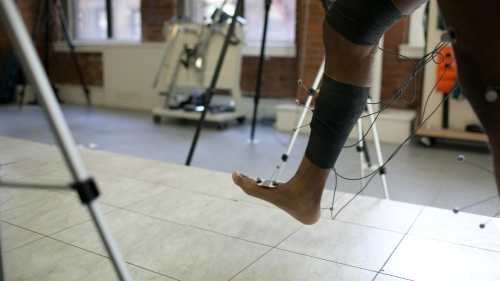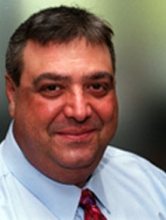We connected with Clinical Assistant Professor Louis Iannuzzi, PT, DPT, to discuss how the global pandemic has impacted his work as a Clinical Wound Specialist at Bellevue Hospital Center's Department of Dermatology.
Could you tell us more about your role at Bellevue and the types of conditions you’re treating? What did a typical day look like for you before the pandemic and what does it look like now?
I am an integumentary specialist responsible for treating all types of wounds across many different disease processes. During a typical day before the pandemic, I was seeing anywhere from 12-15 patients a day. Now I’m seeing anywhere from 18-22 patients a day. Work has definitely gotten busier because part of COVID-19 is that it keeps people down and stops them from moving. If you had COVID-19 and you had to spend a lot of time in bed, you had a high incidence of developing a pressure ulcer, because in addition to that, the infection tends to make the blood coagulate and so you get more sluggish skin conditions.
Physical therapy is a very hands-on profession. How has COVID-19 impacted how physical therapists approach patient care?
Well, it’s removed some of the interpersonal component of service delivery. You used to be up close with your patient in terms of hands-on techniques. Now the use of masks and PPE kind of takes that interpersonal component away, making interactions more sterile. Plus, you can no longer see your patient’s response in their face. You don’t know how they’re progressing or if they’re tolerating your treatment well. COVID-19 has had a definite impact on communication.
Another hard aspect is maintaining personal protection. I usually wash my hands 100 times a day providing wound care services, now, it’s probably twice that much!
What are the biggest opportunities for the PT profession presented by increased use of telehealth options?
I remember when I was part of the Public Health Service, I had to travel all over southwestern Texas from town to town to visit the various regional Hansen’s disease centers in person. Telerehabilitation allows you to spread yourself out more effectively and efficiently. It allows you to see a patient through the camera, look at their profile, and get a good idea of what’s going on. I may not be able to treat the ulcer, but a patient can show me their feet and their hands and I can see what’s going on. It’s also a lot easier to maintain contact with a patient through telerehab; you’re generally not going to lose them as a contact because they didn’t show up for their appointment in the clinic. You’re reaching out to patients and bringing your services to them, rather than having them come to you.
What is the biggest takeaway from your experience for aspiring PTs?
Part of my philosophy is that physical therapists are both clinicians as well as educators, and whether you’re educating your patient, your peers, or other community members, you are able to share experiences and expertise with a greater audience. COVID-19 has made me a sharper clinician because I spend more time doing more self-study. That’s what PTs have to do: we have to read the literature and stay abreast of our profession.

Physical Therapy
380 Second Avenue, Fourth Floor
New York, NY 10010
Phone: 212-998-9400
Email: steinhardt.pt@nyu.edu

